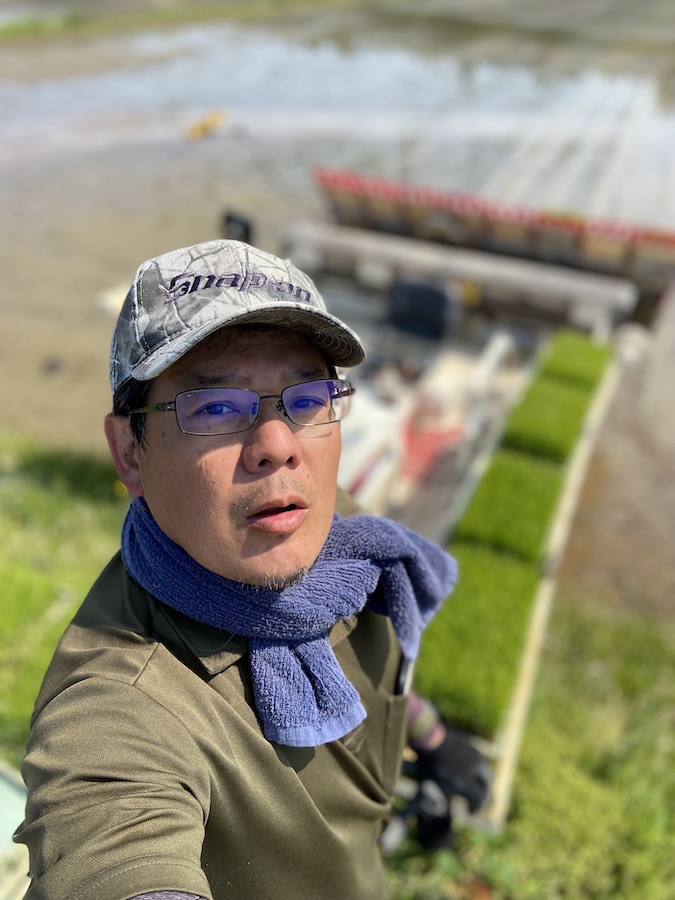
A crested ibis soars with its beautiful wings spread wide, a loach clasped in its beak. (©Fumie Oyama)
このページを 日本語 で読む
Autumn is a season of abundance. In Sado, the rice harvest is now underway, and the Japanese crested ibis (toki) are feeding eagerly. At this time of year, their black breeding feathers are replaced by vivid, orange-tinged pink plumage. It's been a while since my last update on the toki of Sado Island.
The intense summer heat has finally passed, and Sado's mornings and evenings have grown cool — sometimes cool enough to pull out a heavy quilt for sleeping.
Out in the paddies, the golden rice stalks bend under the weight of the grains. The 2024 harvest was poor due to the extreme heat, but this year's crop looks much more promising.

Capturing a Fleeting Moment
As both a farmer and a photographer, this is the busiest season of the year. To catch a fleeting moment of a toki in the morning sun, I rise at 4:30 AM and head out with my camera. I keep shooting until 8:30 AM, when it's time to start the rice harvest — barely a moment to breathe.
After the breeding season (February–July), the toki gradually molt their black feathers, revealing glowing pink plumage. Seeing them like this is a true delight for any photographer.

Until now, toki have only been released into the wild on Sado. But in June 2025, they are set to be released on Honshu, Japan's main island, in Ishikawa Prefecture.
At a September meeting, the Ministry of the Environment's toki reintroduction committee announced that future releases will focus on the mainland.
Meanwhile, Sado will shift toward research and monitoring to preserve genetic diversity, rather than simply increasing numbers. The reintroduction program has clearly reached a turning point.

A Feast in the Paddies
The draining of irrigation ponds during the harvest season is a time of plenty for the toki. In the shallow water, they can easily catch loaches, crayfish, and small shrimp.
Although they forage along the water's edge, toki are not swimmers — some have even drowned while venturing into deeper water.
I, too, look forward to this season every year. Before and after the harvest, I always check which ponds have been drained, knowing the toki will gather there.
The food in the ponds is only available for two or three days, but in that brief window, the birds' rosy feathers glow brilliantly in the morning sun. Capturing those rare moments on camera makes all the exhaustion of the harvest worthwhile.
Follow the series, Sado Wildlife in Focus
RELATED:
- Sado Wildlife in Focus | An 18-Year-Old Crested Ibis's Spring Romance
- Sado Wildlife in Focus | The Crested Ibis and the Secrets of Their Home Life
Author: Fumie Oyama

Fumie Oyama is a two-time winner of the Japan Newspaper Publishers & Editors Association Award as a photographer for The Sankei Shimbun. After covering the reintroduction of the crested ibis to the wild for 11 years, Oyama left the company in 2020 to move to Sado Island. There, he continues to photograph the ibis and other wildlife while engaging in farming. He currently promotes the charms of Sado Island as a photojournalist. Follow Fumie Oyama on Instagram.
このページを 日本語 で読む








